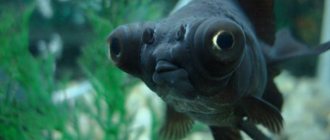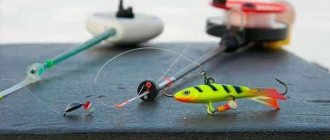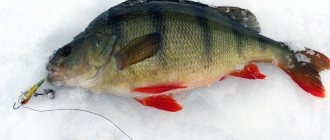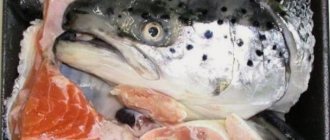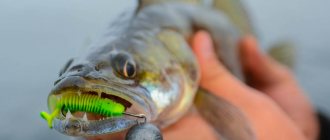Cloudflare Ray ID: 63a7e5b6ae594979 • Your IP: 195.64.208.251 • Performance & security by Cloudflare
Cloudflare Ray ID: 63a7e5b69bbcf156 • Your IP: 195.64.208.251 • Performance & security by Cloudflare
Cloudflare Ray ID: 63a7e5b6ea684bdd • Your IP: 195.64.208.251 • Performance & security by Cloudflare
Thus, electrosensitive fish can track down prey hidden in the sand thanks to the electric fields that are created when muscle fibers contract during breathing.
Electroreception
Electroreception is a sensory organ of cartilaginous fish and some bony fish (electric catfish). Sharks and rays sense electric fields using ampullae of Lorenzini - small capsules filled with mucous contents and lined with specific sensitive cells, located in the head area and communicate with the surface of the skin using a thin tube.
Very susceptible and capable of sensing weak electric fields (the reaction occurs at a voltage of 0.001 mKV/m).
Thus, electrosensitive fish can track down prey hidden in the sand thanks to the electric fields that are created when muscle fibers contract during breathing.
The lateral line and electrosensitivity are sensory organs characteristic only of fish!
Fish also have taste buds . Fish perfectly distinguishes bitter from sweet or salty. The taste perceptions of fish are different from the olfactory lobes of the brain! The taste buds of fish, which are sensitive cells, are located in the mouth (oral buds of the fish), on the lips, cheeks, mustache, as well as on the sides and head.
Most read
Digestive system of fish. Structure and functions Scale of general water hardness Circulatory system of fish. Hematopoietic and circulatory organs
How do fish feel?
The fish has four nostrils in its nose, which are abundantly equipped with sensitive cells that perceive odors. Substances dissolved in water, entering the nostrils, irritate these cells, transmitting a signal to the brain about a particular smell. Water circulates freely through the cavities of the nostrils thanks to special valves located in them. At the same time, the sense of smell in different species of fish is developed differently. However, smell is usually much more important for fish than vision.
Fish also have taste buds . Fish perfectly distinguishes bitter from sweet or salty. The taste perceptions of fish are different from the olfactory lobes of the brain! The taste buds of fish, which are sensitive cells, are located in the mouth (oral buds of the fish), on the lips, cheeks, mustache, as well as on the sides and head.
A characteristic and very important sensory organ for fish is the lateral line (also present in aquatic amphibians). The lateral line is a kind of sensor for movements and vibrations of water. With its help, for example, predators perfectly sense the slightest movements of a potential victim, and the victim, on the contrary, senses a hidden predator. And also thanks to this “sensor”, fish navigate in the underwater space, avoid stationary obstacles, determine the location of food, the direction of the current, etc.
The lateral line is a channel passing through the entire body and communicating with water through holes in the scales. It contains very sensitive cells that respond to atmospheric pressure and inform the brain about its changes. This sensitive channel is also called the seismosensory organ. Sensitive organs that respond to pressure fluctuations in water are also found on the head, jaws and gill covers of fish. The lateral line is connected to the Central Nervous System by the vagus nerve.
The lateral line can be complete: it runs along the entire body of the fish; incomplete, and it may also be absent (for example, in herring). However, fish that lack a lateral line have other, well-developed channels of nerve endings. Damage to the lateral line of a fish can very quickly cause its death.
It is not without reason that many chemists still joke to this day that the most perfect instrument for quantitative and qualitative analysis is the human nose, although we know very well how imperfect our nose is. In this case, biology can provide technology with the principle of creating a universal device for chemical analysis. And in this regard, it is especially important to study the sense of smell in aquatic animals.
Fins - taste organs
Experiments show that fish distinguish between sweet, bitter, sour and salty, four taste qualities that are also perceived by humans. For example, many fish spit out food soaked in quinine or wormwood bitters, as if the bitter taste was “unpleasant” to them. And they treat sweets very well. Thus, sea burbot readily eats meat soaked in sugar syrup.
As is known, the water of different parts of the seas and oceans has different salinity. And the fact that fish can distinguish between salinity sometimes explains their ability to navigate during long-distance migrations. There are no designated roads underwater, and at the same time, fish usually travel along very specific routes. It is possible that they really recognize their path “by taste”.
The location of the taste organs in fish is not limited to the mouth, as in most animals. Fish live in an aquatic environment, and taste substances can be important to them not only when they enter the mouth, but also when they simply touch the outer surface of the body. In catfish, cod fish, and carp fish, taste buds are located, for example, on the whiskers. They are also found on elongated fin rays, like in burbot, whiting and other fish.
In this regard, a very interesting fish with large fins is the sea cock, or three hundred. She seems to walk along the bottom on some thin strange fingers - the rays of the pectoral fins. It turns out that these free fin rays serve the gurnard not only for support. They also have taste sensitivity. Having felt with them the prey hidden at the bottom, three hundred immediately grabs it.
Many fish have taste buds literally throughout their body. Such fish are able to find food by touching it with any part of the body. They can also feed at night. Taste, as can be seen, helping the fish to navigate and find food under water, turns out to be a rather comprehensive sense for it, and the surrounding world is largely represented for the fish in the form of taste sensations.
Smell and taste . The organs of smell in fish are the nostrils located on both sides of the head. By passing water in which certain substances are dissolved through the nostrils, the fish catches their odors. The sense of smell helps her search for food and recognize enemies. It is believed that salmon use their scent to find spawning grounds in the rivers where they hatched.
Despite the fact that only one tenth of one percent of sound vibrations penetrates from air into water, you should speak quietly. If you do this loudly, you can again cause vibrations in the soil, which will be transmitted to the water.
Lateral line organs . This is what scientists call the feeling kidneys of fish, which are sensitive cells with hairs located in a gelatinous protrusion that sways easily under the influence of water currents. In most bony fishes, the sensory buds are located in closed canals and form a lateral line that can extend onto the head. The canals are filled with mucus, into which the gelatinous protrusions of the kidneys protrude. The channels are connected to the external environment by small holes in the scales.
With the help of this sensory organ, fish determine the direction, strength of current and waves, and the size of objects moving in the water. When visibility is poor, the lateral line replaces the fish's vision.
Smell and taste . The organs of smell in fish are the nostrils located on both sides of the head. By passing water in which certain substances are dissolved through the nostrils, the fish catches their odors. The sense of smell helps her search for food and recognize enemies. It is believed that salmon use their scent to find spawning grounds in the rivers where they hatched.
Taste buds of fish are located in the mouth, on the antennae, gills, head, fin rays and on the surface of the body. Fish perceive different shades of taste: sweet, bitter, salty, sour.
Touch . Not all fish have organs of touch. They are mainly the antennae at the end of the lips. Some fish have only one antennae, others have pairs. Antennae help fish search for food at the bottom.
Cloudflare Ray ID: 63a7e5dd0d9975af • Your IP: 195.64.208.251 • Performance & security by Cloudflare
The organs of touch are clusters of sensory cells (tactile bodies) scattered over the surface of the body. They perceive the touch of solid objects (tactile sensations), water pressure, as well as temperature changes (heat-cold) and pain.
In fish, as in other vertebrates, they are located in the front part of the head and are represented by paired olfactory (nasal) sacs (capsules) that open outward with nostril openings. The bottom of the nasal capsule is lined with folds of epithelium, consisting of supporting and sensory cells (receptors). The outer surface of the sensory cell is equipped with cilia, and the base is connected to the endings of the olfactory nerve. The olfactory epithelium contains numerous cells that secrete mucus.
The size of the nostrils is related to the lifestyle of the fish: in active fish they are small, since during fast swimming the water in the olfactory cavity is quickly renewed; In sedentary fish, on the contrary, the nostrils are large; they allow a larger volume of water to pass through the nasal cavity, which is especially important for poor swimmers, in particular those living near the bottom.
In experiments, when the nasal cavity of these fish was washed with water from their native spawning ground, a strong electrical reaction occurred in the olfactory bulb of the brain. The reaction to water from downstream tributaries was weak, and the receptors did not react at all to water from other spawning grounds.
The olfactory receptor of fish, in addition to chemical ones, is capable of perceiving mechanical influences (flow jets) and temperature changes.
They are represented by taste buds, formed by clusters of sensory (and supporting) cells. The bases of the sensory cells are intertwined with the terminal branches of the facial, vagus and glossopharyngeal nerves.
The perception of chemical stimuli is also carried out by the free nerve endings of the trigeminal, vagus and spinal nerves. The perception of taste by fish is not necessarily associated with the oral cavity, since taste buds are located both in the oral mucosa and on the lips, and in the pharynx, on the antennae, gill filaments, fin rays and throughout the surface of the body, including the tail.
Catfish perceive taste mainly with the help of their whiskers: it is in their epidermis that clusters of taste buds are concentrated. In the same individual, the number of taste buds increases as the body size increases. Pisces distinguish the taste characteristics of food: bitter, salty, sour, sweet. In particular, the perception of salinity is associated with a pit-shaped organ located in the oral cavity.
The sensitivity of the taste organs in some fish is very high: for example, the cave fish Anoptichthys, being blind, sense a glucose solution at a concentration of 0.005%.
Lateral line sensory organs
Branches of the lateral line are also present on the head. At the bottom of the canal (in groups there are sensory cells with cilia. Each such group of receptor cells, together with the nerve fibers in contact with them, forms the organ itself - a neuromast. Water flows freely through the canal, and the cilia sense its pressure. In this case, nerve impulses of different frequencies arise. Organs The lateral line is connected to the central nervous system by the vagus nerve.
The ability to catch waves reflected from living and inanimate objects is very important for deep-sea fish, since in the darkness of great depths the usual visual perception of surrounding objects and communication between individuals is impossible.
It is assumed that the waves created during the mating games of many fish, perceived by the lateral line of the female or male, serve as a signal for them. The function of the skin sense is performed by the so-called skin buds - cells found in the integument of the head and antennae, to which nerve endings are suitable, but they are of much less importance.
The organs of touch are clusters of sensory cells (tactile bodies) scattered over the surface of the body. They perceive the touch of solid objects (tactile sensations), water pressure, as well as temperature changes (heat-cold) and pain.
There are especially many sensory skin buds in the mouth and lips. In some fish, the function of the organs of touch is performed by the elongated rays of the fins: in gourami this is the first ray of the pelvic fin, in the trigla (guinea cock) the sense of touch is associated with the rays of the pectoral fins, feeling the bottom, etc. In inhabitants of turbid waters or bottom fish, the most active at night, the largest number of sensory buds are concentrated on the antennae and fins. However, in catfish, the whiskers serve as receptors for taste, not touch.
Fish apparently feel mechanical injuries and pain less than other vertebrates: sharks that have attacked prey do not react to blows to the head with a sharp object; During operations, fish are often relatively calm, etc.
Thermoreceptors. They are the free endings of sensory nerves located in the surface layers of the skin, with the help of which fish perceive water temperature. There are receptors that perceive heat (thermal) and cold (cold). Points of heat perception are found, for example, on the pike’s head, and cold perception points are found on the surface of the body. Bony fish detect temperature changes of 0.1–0.4°C.
Electric sense organs
The importance of vision is not so great in aquatic inhabitants compared to terrestrial ones.
It is generally accepted that since fish are at a lower level of organization than mammals, their sense organs are also more primitive. Actually this is not true!
Although their sensory experiences are different from ours, they are no less interesting and varied than those of higher vertebrates. And, of course, the full development of these organs is associated with the fish’s habitat – water.
Vision.
The importance of vision is not so great in aquatic inhabitants compared to terrestrial ones.
This is due, firstly , to the fact that with increasing depth, illumination decreases significantly, secondly , very often fish are forced to live in conditions of low water transparency, and thirdly , the aquatic environment allows them to use other senses with much greater efficiency.
Almost all fish have eyes located on both sides, which provides them with panoramic vision in the absence of a neck and, as a consequence, the impossibility of turning the head without turning the body. Low elasticity of the lens makes fish myopic and they cannot see clearly at long distances.
Many species have adapted their vision to highly specific living conditions: coral reef fish have not only color vision, but are also able to see in the ultraviolet spectrum; some fish that collect food from the surface of the water have eyes divided into two halves: the upper one sees what is happening in the air, the lower one - under water, in fish living in mountain caves, the eyes are generally reduced.
Hearing.
Oddly enough, fish have perfectly developed hearing , despite their lack of external signs. Their hearing organs are combined with the balance organs and are closed sacs with otoliths floating in them. Very often the swim bladder acts as a resonator. In a dense aquatic environment, sound vibrations travel faster than in air, so the importance of hearing for fish is great.
It is a well-known fact that fish in water hear the footsteps of a person walking along the shore.
Many fish are capable of making various purposeful sounds: rubbing their scales against each other, vibrating various parts of the body and thus carrying out sound communication.
Smell.
The sense of smell plays a significant role in the life of fish.
This is due to the fact that odors spread very well in water.
Everyone knows that a drop of blood falling into the water attracts the attention of sharks located several kilometers from this place.
In particular, salmon going to spawn use their sense of smell to find their way home.
Such a subtle sense of smell is developed in fish due to the fact that the olfactory bulb occupies a significant part of their brain.
Taste.
Flavoring substances are also perfectly distinguishable by fish , because... perfectly soluble in water. Taste buds are located not only in the mouth, but also throughout the rest of the body, especially on the head and antennae. For the most part, the taste organs are used by fish to search for food, as well as for orientation.
Touch.
Fish have ordinary mechanical receptors , which, like taste organs, are located mainly at the tips of their antennae, and are also scattered over the skin. However, in addition to this, fish have a completely unique receptor organ - the lateral line .
This organ, located along the middle on both sides of the body, is capable of perceiving the slightest fluctuations and changes in water pressure.
Thanks to the lateral line, fish can obtain information about the size, volume and distance to distant objects. With the help of the lateral line, fish are able to go around obstacles, avoid predators or find food, and maintain their position in the school.
On chemoreception and smell in fish.
In the eternal confrontation between a fisherman and an underwater inhabitant, when the former, thanks to experience, cunning and various tricks, tries to catch the latter, who is trying with all his might to be well-fed and at the same time not caught, the fact that it is not even the skill of a person, but his observation and inquisitiveness that appears to be extremely important coupled with the desire to put the acquired knowledge into practice. Why does the pike take exactly “this wobbler”? How quickly will crucian carp discover the fragrant bait? What's going on underwater near a fishing hook?...
Possessing sufficient knowledge, an observant angler will always be able to find answers to his by no means rhetorical questions. Especially when science comes to his aid...
Currently, many aspects of the physiology and ethology (behavior) of fish have been studied in sufficient detail. Since the early 1960s, scientists have come under close attention to the study of fish behavior in natural conditions. In 1963, World Fishing magazine described the progress of the II World Fishing Gear Congress in London: “Today the key problem can be considered the behavior of fish and our ignorance of this issue.” Now the situation has changed radically. We learned a lot from the life of the fish in our reservoirs. Unfortunately, a large amount of information about the life of fish that is truly interesting for anglers, sportsmen and amateurs has remained unclaimed on the pages of reputable scientific journals and collections. Over several decades, hundreds of books and scientific articles have been published covering the characteristics of the sensory systems and behavior of fish, both freshwater, marine, and oceanic. The following publications seem quite interesting and informative for the fisherman: B.A. Flerov “Smell of fish”, M., 1962, V.R. Protasov “Bioacoustics of fish”, M., 1965 and “Vision and short-range orientation of fish”, M., 1968, “Behavior and perceptions of fish”, M., 1967, “Biological principles of controlling fish behavior”, M., 1970, V .AND. Guselnikov, V.V. Loginov “Visual analyzer of fish”, M., 1976, “Study of fish behavior in connection with the improvement of fishing gear”, M., 1977, V.R. Protasov “Fish behavior (mechanisms of fish orientation and their use in fishing)”, M., 1978, B.P. Manteuffel “Ecology of animal behavior”, M., 1980, A.A. Darkov “Ecological features of visual signaling in fish”, M., 1980, “Chemosensitivity and communication of fish”, M., 1989 and many others. It is impossible to provide a complete list of literature (including foreign literature) on the ethology and physiology of fish and a review of the organization of their sensory systems (sense organs) due to the vastness of the material and limited journal space.
In this article we will pay attention only to the sense of smell of fish and their perception in the natural environment of chemicals and odors, which play a huge role in the life of the inhabitants of our rivers, ponds and seas.
About the sense organs. Fish have been found to have several channels for obtaining a variety of information about their environment. Information can be transmitted by sounds and postures, flows of water and chemicals, flashes of light and electric fields. The transmission and reception of information data, in addition, can occur through contact - thanks to the tactile touches of fish to objects.
Sense organs or, as they are commonly called now, sensory systems provide fish with diverse information about the aquatic environment and their internal state. With the help of sensory systems, fish are able to perceive and transform electromagnetic fields in the visible (vision) and infrared (temperature sensitivity) regions of the spectrum, feel mechanical disturbances in the form of sound waves (hearing), gravity (vestibular and gravitational sensitivity), mechanical pressure (touch) , perceive chemical signals - detect substances in the liquid phase (taste) and in the gas phase (smell) (Varfolomeev et al., 2000).
Depending on the environmental conditions of the environment (lighting, transparency, water hardness, etc.), the degree of development of olfactory reception in different species of fish is different. Chemical substances that are either released into the water by fish or are perceived by it have a signaling value for maintaining inter- and intraspecific connections, contacts between individuals of the same species in a herd, predator-prey relationships, local daily feeding and long-term spawning (seasonal) ) migrations.
The smells that fish perceive help them find food, navigate in space, respond to predators or detect prey.
Perception of chemical signals by fish. The olfactory organs are located in the nasal cavity. Usually in fish, paired nasal openings - nostrils - are divided into two by an incomplete fold: the anterior entrance and the rear exit. During the process of smelling, water enters the front nostril and exits through the back ( Fig. ). In all fish, with the exception of lungfishes, the nostrils do not communicate with the pharyngeal cavity. The nostril is an olfactory sac, lined with a mucous membrane with figured folds - rosettes, increasing the total area of contact of this organ with water.
Based on the degree of development and use of the olfactory organs by fish, a distinction is made between macrosmatic fish, which are highly sensitive to a wide range of odors, and microsmatic fish, in which the range of perceived odors is very narrow and is often limited only to sex pheromones. In the former, the sense of smell is poorly developed; food is found mainly through vision. As a rule, these are daytime predators (perch, pike, asp). In macromatic fish (sharks, chinook salmon, sockeye salmon, nocturnal predators - catfish, burbot, river eel), the role of smell among other organs is predominant. The olfactory sacs of these fish are large, and their owners are very sensitive to odors.
Some scientists also classify pike perch as macrosmatics. Anglers are well aware of its ability to hunt, accurately find prey and fall for spoons and wobblers at night.
Fish also have organs of chemical non-olfactory reception, which perceive general chemical irritations and taste sensations. With their help, fish receive information about salinity, pH of water, CO2 content in water, etc. These organs are represented by taste buds, which are located on the skin and antennae, in the mouth, gills, head, fin rays, and on the skin of the fish body. Some fish, for example exotic ones, use their caudal fin to touch. Fish with a large number of taste buds (bream, carp, crucian carp) search for food with their help.
How does a fish find food? Over the course of a number of years, very interesting studies on the feeding behavior of fish have been carried out at the Department of Ichthyology of Moscow State University, at the Institute of Evolutionary Morphology and Animal Ecology of the Russian Academy of Sciences, the Institute of Biology of Inland Reservoirs of the Russian Academy of Sciences, and other institutions. Some research results are presented in our brief literature review.
Fish that feed in a reservoir on invertebrate organisms that live in the thickness of the silt (golden crucian carp, common gudgeon, carp) move near the very bottom when searching for food, often “testing” soil particles, grasping, “pecking” them, and actively digging through the silt.
Unlike bottom-dwelling crucian carp or carp, pelagic fish (bleak, sabrefish) can only occasionally “peck” particles of silt that attract them; they are characterized by more impetuous and rapid movements when searching for food.
It is noteworthy that if the same carp, crucian carp, gudgeon and tench search, relying entirely on touch and smell, then pelagic planktivores (fish that feed in the water column - silver carp and sprat) search for food mainly using vision.
It has been established that adult pike use predominantly visual and seismosensory orientation rather than relying on the perception of chemical odors. Moreover, as a result of experiments, it was discovered that juvenile pikes in the dark (when vision is impossible to function) are unable to feed on stationary food, that is, one that does not create sound vibrations picked up by the lateral line organs.
Research has shown that natural scents are more effective for freshwater fish than artificial scents. Therefore, experienced fishermen mix bait and bait in a pond with natural water, and not at home - from the tap.
These preferences of fish can also explain the “failure” of many food mixtures popular abroad in our reservoirs. Domestic fish are simply not used to “foreign” components, and therefore smells...
Interestingly, the attraction response is sharply enhanced when visual and chemical stimuli are presented together. The results of purely scientific observations were eventually immediately translated into commerce: the first aromatic baits, spinners, appeared on the fishing market. This kind of spoon, unlike a regular one, “impacted” several organs of perception of predators at once - vision, seismosensory system (lateral line), smell, which greatly increased the angler’s chances of a confident grip on the fish.
It’s no secret that any angler preparing bait or using an artificial feed mixture is guided, first of all, by his own feelings: “Oh, what a smell, I wish I could eat it myself!” But for some reason the fish does not want to be tempted by such a fragrant and irresistible (according to the fisherman) groundbait and bait. Why?
Usually, the reluctance of fish to bite us is most often explained by the banal “The weather is bad...” And the root of the problem lies precisely in the fisherman’s anthropocentric approach to understanding the behavior of his underwater rival. When smelling the smell of bait, the receptors of the human olfactory organ deal with the air environment, but the fish will have to look for food in the aquatic environment, guided by senses that are somewhat different from human ones. And the aroma, which is strong for us, may not be perceived by the fish’s sense of smell at all. Even if a fish smells the intense smell of bait, it is not at all necessary that it will bite: the source of a strong and persistent smell can even scare away the inhabitants of the reservoir, who in this case will focus on the periphery of the “gradient” zone.
Fish are able to distinguish shades of taste - sweet, bitter, salty, sour. Their sensitivity to the perception of shades of taste is tens and hundreds of times higher than that of humans (for example, to table salt - 205 times, to quinine - 24 times). This should be taken into account when preparing baits and aromatic baits for fishing: what is intensely perceived, “smelled” by the human nose, can literally “stun” the organs of smell and taste of the fish.
Blind cave fish search for food primarily using their senses of smell and touch. They sense a solution of a biogenic nature with a concentration of less than 10-12% (no more than 50-100 molecules (!) of the chemical substance enter the olfactory organ - the olfactory sac). Using the conditioned reflex technique, data were obtained regarding the thresholds for the perception of certain substances by blind fish: cane sugar - 0.005%, table salt - 0.0023%, acetic acid - 0.0035%, quinine - 0.0006%.
By the way, it was found that at low temperatures and as the water temperature decreases, the duration of the search for food objects increases.
About the anxiety pheromone or “fear substance”. Very interesting scientific data on the study of fish behavior and their reaction to the so-called “fear substances”.
For most peaceful fish, substances released from the skin of fish when injured, for example, when attacked by a predator, are natural chemical repellents (from the Latin repello - I push away, drive away). Fish perceive them at long distances; the presence of “fear substances” causes a defensive reaction in fish. It was first described by G. Noble in 1939 and studied in more detail in the laboratory of Karl von Frisch in 1939 - 1941. The damaged skin had a characteristic repellent effect on the fish: 30 s after the introduction of its extract into the water where the experimental fish were kept, the school shrank in size, and then all the individuals scattered.
Benthic fish with a protective coloration, after a sharp rush away from the source of the threat, hide for a long time at the bottom. The crucian carp try to burrow into the ground, sharply reduce their motor activity and hide. Fish living in the upper layers (bleak, sabrefish) try to jump out of the water. Such results were obtained under experimental conditions by MSU scientists E. A. Marusov and G. A. Malyukina. For all fish, after exposure to the “fear substance,” a long period of general excitability, wariness, and fearfulness was observed. It was found that sensitivity to the repellent in fish in a school is always higher than in individual individuals; it depends on the nutrition of the fish and the condition of the body. In winter, the reaction decreases.
It is characteristic that such fear reactions are characteristic only of peaceful schooling fish. Their biological meaning is a warning of danger. D.V. Radakov (1958, 1961, 1970, etc.) in his studies established that the speed of propagation of the excitation wave in a school of fish is 15 times higher than the maximum (throwing) speed of movement of individual individuals!
It was noted that damage to the surface layer of the skin - the epidermis (scratch) did not have a deterrent effect on fish. An alarm or fear reaction was observed only if the fish received a deep scratch or wound. It is characteristic that extracts of other organs (small intestines, liver) did not cause fear in fish, and extracts obtained from gills, muscles, ovaries affected the stock 5, 10 and 100 times less, respectively, than extracts of fish skin.
It is noteworthy for fishing that the following can be stated: the de-hooking of a hooked fish and injury to its oral cavity does not frighten the relatives gathered in the feeding area as much as an accidental purple on the belly, side or head during hooking.
In addition, scientists were able to establish the fact that fish have an additional chemical danger signal, released into the water by fish that are in a state of stress, excited, or frightened individuals (Malyukina, Martemyanov, 1981; Malyukina et al., 1983). In other words, a danger signal can be transmitted in a school not only after the predator grabs the prey, but also thanks to the “intuitive sensations” of the prey fish about the hidden predator.
A few more interesting facts from the life and relationship between predator and prey. For prey fish, the smell of ambush predators (the smell of excrement of pike, catfish, etc.) evoked stronger defensive reactions than the smell of predator predators (perch, asp). At the same time, the smell of the predator is “one of its own”, i.e. included in the same biocenosis with prey fish, for the latter it was much stronger than the smell of “unfamiliar”, stray predators (Marusov, 1976, 1991; Kasumyan, Pashchenko, 1985). On the contrary, the pike is more willing to attack a neighboring gudgeon than a guest brought from another body of water.
Amazingly, the predators themselves, according to the studies of G. Malyukina and V. Martemyanov (1981), using chemoreception, are able to distinguish the smell of potential victims, as well as determine the state of the prey fish and react differently to the smell of a calm and excited individual.
About the attractiveness and repellent effect of certain substances on fish and their olfactory organs. Under natural conditions, fish may lose their sense of smell (chemosensitivity). This often occurs due to parasites settling in the olfactory sac and the action of various pollutants, for example, detergents (Kasumyan, Pashchenko, 1982).
One of the most dangerous priority pollutants, phenol, at a concentration of 0.04-0.0004%, has an effect on fish similar to the effect of carbon monoxide on humans: when fish swam into an area with a low concentration, the olfactory organs “turned off” and subsequently the “distressed” fish stopped avoiding water areas with high, even lethal, concentrations of phenol and died.
Recently, reliable data have been obtained indicating the attractiveness (appeal) and repellency (“repelling”) of amino acids that are part of animal protein feeds, including artificial ones. Alanine, lysine and tyrosine, for example, have a reliable attractive effect for carp, and the latter attract fish at any concentration, and alanine is preferred by carp juveniles (Pavlov, Kasumyan, 1990; Kasumyan, et al., 1993).
It should be noted that many amino acids for fish are semichemicals - substances that can change behavior, primarily food behavior - leucine, methionine, threonine, α-alanine, aspartic and glutamic acids, asparagine, valine, glycine, tryptophan, cystine and cysteine. These free amino acids are found in excess in household wastewater and effluents from a number of industries (biotechnological, food industry) and can attract fish to polluted areas of water areas. Fish feel (smell) the intense smell of “unreal” food and concentrate in large quantities in toxically dangerous places.
Thus, a huge threat to the fish population of the reservoir is revealed: in addition to the accumulation of toxicants in the body of the fish, there is an increase in the density of fish in a small part of the water area, which limits the use of the food supply in the reservoir, changes the conditions for feeding, wintering and spawning of fish.
Author: Novitsky Roman Aleksandrovich Candidate of Biological Sciences, Associate Professor of the Department of Zoology and Ecology of Dnepropetrovsk National University. Professional ichthyologist.
https://ohota.dp.ua/articles/roman_novitsky/ob_obonyaniy_ryb


